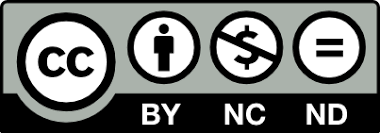THE SOCIO-PRAGMATIC FUNCTION OF IRONY ON SOCIAL MEDIA
Using examples from Johan Deckman's art pictures on Instagram
DOI:
https://doi.org/10.52340/PUTK.2024.2346-8149.09.13Keywords:
CMD, humor, Instagram, socio-pragmatic functions of irony, verbal ironyAbstract
Irony conveys a tinge of derogation, criticism, and contempt in an attitude, meaning the opposite of what has been said (Grice, 1967). This paper deals with the socio-pragmatic perspective of irony on social media (Instagram), investigating the following issues: 1. Why would a speaker decide to be ironic, and how is irony encoded in their utterance? 2. How can readers grasp ironic intentions in the examples of the studied Instagram account? 3. Despite being negative, can irony serve a positive social function? On that account, we shall try to analyze Johan Deckman’s art displayed in photos on his Instagram account. The scope of the creator’s intentions and the contents of his utterances will also be inspected. Moreover, this paper studies readers’ decoding of irony by analyzing the comment section. From a pragmatic perspective, this research will be carried out through the following components: 1. background knowledge of the creator/reader and their general perception of the world (Colston & Katz, 2005); 2. the situational character of irony (Kotthoff, 2003); 3. the allusional pretense in irony (Kumon-Nakamura et al., 1995). From a functional perspective, the study is based on the following categories of irony employment: 1. Humor 2. The elevation of the social status 3. Aggression 4. Emotional control (Dews et al., 2009). Based on the researched data, this article also suggests a hypothesis that there is one more category to add to those offered by Dews, Kaplan, & Winner (2009), specifically - "empathic call for change".
Full Text (PDF)
References
Attardo, S. (2000). Irony as relevant inappropriateness. Journal of Pragmatics, Volume 32, Issue 6, Pages 793-826, https://doi.org/10.1016/S0378-2166(99)00070-3.
Attardo, S. (2001). Humorous Texts: A Semantic and Pragmatic Analysis. Humor Research Series6.
Berlin and New York: Mouton de Gruyter. 238 pages, ISBN 3-11-017068-X.
Austin, J. L. (1962). How To do things with words. Harvard University Press, 1975 M04 15 - 168p. https://www.academia.edu/36270217/Austin_1962_how_to_do_things_with_words.
Brown, J. W. (2015). Examining Four Processes of Audience Involvement with Media Personae: Transportation, Para-social interaction, Identification, and Worship, Communication Theory, Volume 25, Issue 3, Pages 259–283, https://doi.org/10.1111/comt.12053
Bryant, G. A. (2010). Prosodic Contrasts in Ironic Speech.
Burke, K. (1969). A rhetoric of Motives. Berkeley, CA: University of California Press. http://www.communicationcache.com/uploads/1/0/8/8/10887248/kenneth_burke_-_a_rhetoric_of_motives_1950.pdf
Clark, H. (1987). Relevance to what? Behavioral and Brain Sciences 10(4):714,
Clark, H. H. & Gerrig, R. J. (1984). On the Pretense Theory of Irony. Journal of Experimental Psychology. 113(1),121–126. https://doi.org/10.1037/0096-3445.113.1.121
Colston, H. L. (2005). Social and Cultural Influences on Figurative and Indirect Language. (pp. 99–130). Lawrence Erlbaum Associates Publishers. https://psycnet.apa.org/record/2005-15190-005.
Colston, H. L. & Katz, A. N. (2005). Figurative language comprehension: Social and cultural influences. 35, 757–760.
Dews, S. & Winner, E. (1995). Muting the meaning: A social function of irony. Metaphor and Symbol 10(1): 3-19, https://doi.org/10.1207/s15327868ms1001_2
Dews S., Kaplan J., & Winner, E. (2009). Why Not Say It Directly? The Social Functions of Irony. Discourse Processes, 19, 347-367,
Delos-Reyes, R. (2018). The functions of language in Facebook posting. Asian EFL Journal 20(3):196-206, https://www.researchgate.net/publication/324153668_The_functions_of_language_in_facebook_posting
Fabian, E. (2006). Irony and self-irony in psychotherapy. ResearchGate, https://www.researchgate.net/publication/286833224_Irony_and_self-irony_in_psychotherapy .
Garmendia, J. (2018). Irony. 42-63; 65-78; 84-87; 138-144 https://lccn.loc.gov/2017053335
Garmendia, J. (2010). Irony is Critical.397-421 https://doi.org/10.1075/pc.18.2.07gar.
Gibbs, R. W. Jr. (2006). Irony in Talk Among Friends.
Gibbs, R. W. Jr, Bryant, G.A. & Colston, H. L. (2014). Where is Humor in Verbal Irony. 575-595 https://doi.org/10.1515/humor-2014-0106.
Grice, P. (1967). Further notes on Logic and Conversation. In Grice, P. (1989), pp. 41-57. https://aardvark.ucsd.edu/language/grice_further_notes.pdf.
Hancock, J.T. (2004). Verbal Irony use in face-to-face and computer-meditated conversations. Journal of Language and Social Psychology. 2004;23(4):447-463. https://doi.org/10.1177/0261927X04269587.
Kotthoff, H. (2003). Responding to Irony in Different Contexts: On Cognition in Conversation. Journal of Pragmatics 35, 1387–1411. http://www.elsevier.com/locate/pragma.
Kumon-Nakamura, S., Glucksberg, S. & Brown, M. (1995). How About Another Piece of Pie: The Allusional Pretense Theory of Discourse Irony. https://pubmed.ncbi.nlm.nih.gov/7897341/
Kreuz, R. J., Long, D. L., Church, M. B. (2009). On Being Ironic: Pragmatic and Mnemonic Implications. http://www.tandfonline.com/loi/hmet19
Moss, L. (2020), Why your Brain Can Read Jumbled Letters. Treehugger https://www.treehugger.com/why-your-brain-can-read-jumbled-letters-4864305
Rusieshvili-Cartledge, M., & Dolidze, R. (2020). Hate Speech in Online Polylogues: using examples of LGBT issues in Georgian computer-meditated discourse. FLEKS - Scandinavian Journal of Intercultural Theory and Practice, 7(1), 43–59. https://doi.org/10.7577/fleks.4171
Sperber, D. & Wilson, D. (1986). Relevance: communication and cognition. Oxford: Blackwell. https://monoskop.org/images/e/e6/Sperber_Dan_Wilson_Deirdre_Relevance_Communica_and_Cognition_2nd_edition_1996.pdf
Sultanoff, S. M. (2000), Using Humor for Treatment and Diagnosis: A Shrinking Perspective. Publication of the American Association for Therapeutic Humor. https://www.mycematters.com/wp-content/uploads/2021/01/Using-Humor-in-Treatment-andDiagnosis.pdf
Trudgill, P. (2006). Language and Dialect: Linguistic varieties. DOI: 10.1016/B0-08-044854-2/01492-9
Wilson, D. & Sperber, D. (1992). On verbal Irony. Elsevier, DOI:10.1016/0024-3841(92)90025-E
Wilson, D., Sperber, D. (2012). Meaning and Relevance. Cambridge University Press https://doi.org/10.1017/CBO9781139028370












